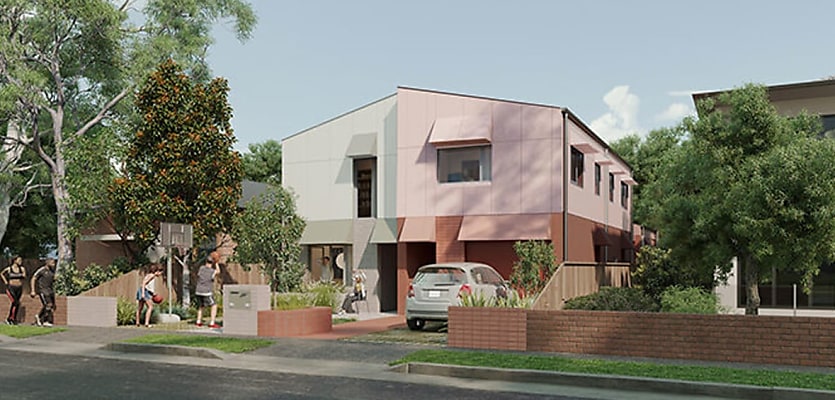The Minns government has unveiled a sweeping shake-up of the state’s housing approvals process, releasing a suite of architect-designed homes that can be fast-tracked through the planning system within 10 days.
The NSW Housing Pattern Book, developed following an international design competition, features eight pre-approved low-rise designs – including terraces, townhouses, and manor homes – that the government claims will dramatically cut red tape and project costs for developers, builders, and home owners.
The designs are adaptable for various family sizes and include biodiversity features, such as garden-friendly layouts.
From 30 July, the patterns will be made available for just $1 each for the first six months, before increasing to $1,000, a discount on traditional architectural fees estimated at over $20,000.
Government architect NSW, Abbie Galvin, said the initiative would open access to quality, sustainable housing and offer a critical boost to diversity in the market.
“I am excited to be able to share these patterns that can be used by the development industry, architects, planners, councils, and communities,” she said. “The pattern book offers practical and sustainable designs that can be adapted to suit many neighbourhoods, positively contributing to the character of a street.”
Crucially, the pre-approved plans come with a 10-day fast-track approval process, a dramatic reduction in timeline that will only be triggered once all required assessments are complete.
Already the playbook has received support from industry, with the Property Council of Australia describing the policy as a “smart step”.
“We’ve said from the start: this isn’t about a one-size-fits-all approach,” said Property Council NSW executive director Katie Stevenson. “It’s about high-quality, modest, sustainable housing options that are ready to go.”
She added: “Releasing pre-approved, architect-led designs with a dedicated fast-track pathway is a clear step towards delivering the homes our communities need – faster, more affordably, and with confidence in the outcome. It’s about cutting red tape without cutting corners.”
The government hopes the changes will cut cost-of-living burdens, positioning the policy as a cornerstone of its broader housing affordability agenda.







You are not authorised to post comments.
Comments will undergo moderation before they get published.